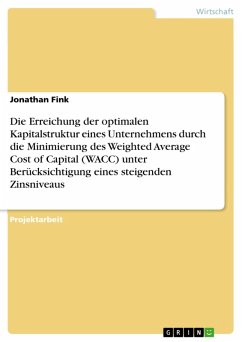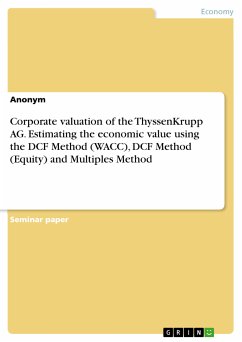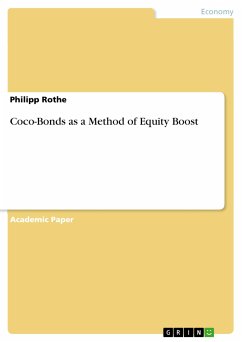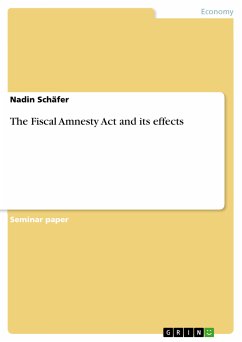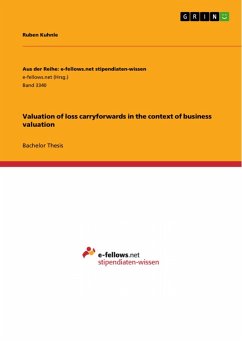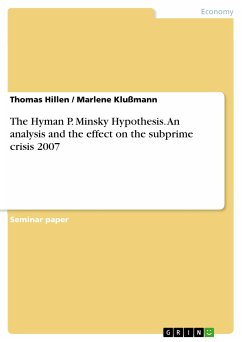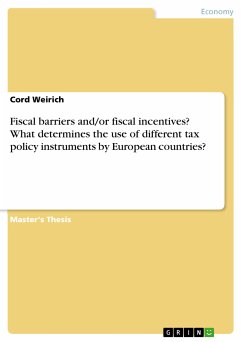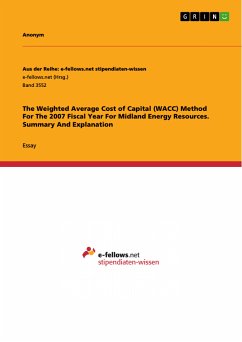
The Weighted Average Cost of Capital (WACC) Method For The 2007 Fiscal Year For Midland Energy Resources. Summary And Explanation (eBook, PDF)
Sofort per Download lieferbar
5,99 €
inkl. MwSt.

PAYBACK Punkte
0 °P sammeln!
Essay from the year 2019 in the subject Business economics - Investment and Finance, grade: 65% (UK grading system), Oxford University, language: English, abstract: The following paper examines the cost of capital for the 2007 fiscal year for both the overall company and each division individually. The WACC method yields estimate for the firm's cost of capital of 8,17%, whilst divisional estimates are as follows: E&P 8,15%, R&M 9,03%, Petchem 6,89%. This is relatively lower in comparison to companies such as BP (11% in 2007, 10% in 2006) (BP plc 2007 Annual Report and Accounts, p58), but in li...
Essay from the year 2019 in the subject Business economics - Investment and Finance, grade: 65% (UK grading system), Oxford University, language: English, abstract: The following paper examines the cost of capital for the 2007 fiscal year for both the overall company and each division individually. The WACC method yields estimate for the firm's cost of capital of 8,17%, whilst divisional estimates are as follows: E&P 8,15%, R&M 9,03%, Petchem 6,89%. This is relatively lower in comparison to companies such as BP (11% in 2007, 10% in 2006) (BP plc 2007 Annual Report and Accounts, p58), but in line with with 2019 data on the integrated oil & gas industry (8,57%) as per Damodaran (2019). Midland Energy Resources ("MER" or "Midland") is an integrated oil & gas company, with operations comprising exploration and production ("E&P" or "upstream"), refining and marketing ("R&M") and petrochemicals ("Petchem"). Operating revenue and income for 2006 was $248.5bn (E&P: $22,4bn, R&M: $203,0bn, Petchem: $23,2bn) and $42,2bn, respectively. As part of its annual review process, the company estimates its cost of capital. The paper is based on a Harvard Business School case study.
Dieser Download kann aus rechtlichen Gründen nur mit Rechnungsadresse in A, B, BG, CY, CZ, D, DK, EW, E, FIN, F, GR, HR, H, IRL, I, LT, L, LR, M, NL, PL, P, R, S, SLO, SK ausgeliefert werden.







